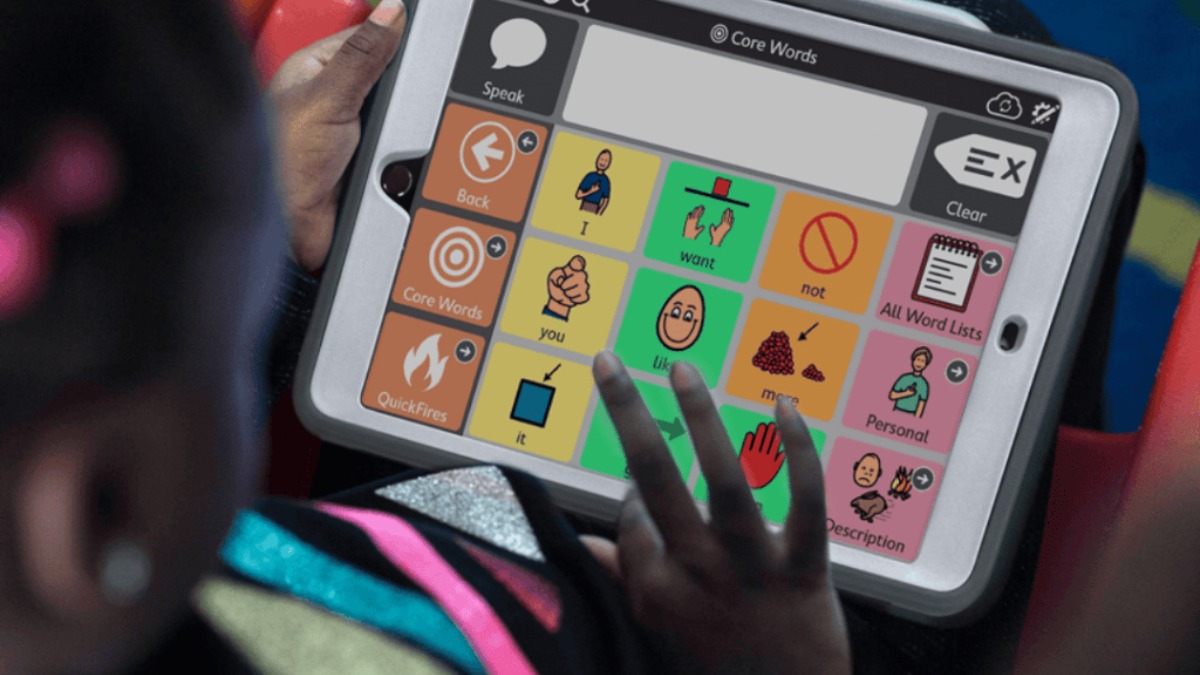Unlock Developmental Milestones with Floortime Learning Tree
April 23, 2025
A detailed visual guide on the Floortime Learning Tree, exploring its impact on child development, therapy techniques, and strategies for progress.

Key Points:
- The Floortime Learning Tree model supports developmental growth for children, especially those with autism.
- Each level of the Floortime Learning Tree builds on the child’s current abilities and developmental stage.
- DIR Floortime therapy fosters meaningful, engaged play to help children build social, emotional, and cognitive skills.
A 2007 study reported substantial improvements in emotional development and reductions in core autism symptoms among participants engaged in Floortime sessions. This underscores Floortime's efficacy in fostering emotional and communicative development in children with autism.
Overview of the Learning Tree Model
The Learning Tree model is a comprehensive framework that represents various stages of a child's development, illustrating how their skills and abilities grow through supportive interactions with caregivers. Each layer of the tree symbolizes a critical aspect of development, with corresponding milestones that guide growth.
- Roots: Represent emotional foundations, highlighting the importance of secure attachments and emotional regulation.
- Trunk: Symbolizes core developmental skills, such as communication, motor skills, and cognitive abilities.
- Branches: Reflect social relationships, emphasizing the development of peer interactions, empathy, and social understanding.
- Leaves: Represent individual interests and strengths, showcasing the child's unique preferences, talents, and passions.
This model emphasizes how each layer of development supports the next, creating a holistic view of a child's growth.
4 Components of the Learning Tree
The components of the Learning Tree are carefully designed to promote a well-rounded developmental framework for children. Each component works together to support various aspects of growth:

Together, these components create a balanced approach to nurturing a child's potential.
How Does the Floortime Learning Tree Work?
The tree is divided into several stages, beginning with the foundational skill of emotional regulation. This is followed by increased focus on social engagement, the development of communication skills, and eventually higher cognitive abilities, like problem-solving and abstract thinking.
Each stage builds upon the previous one, ensuring a holistic approach to developmental growth. The Floortime Learning Tree emphasizes the role of the caregiver in guiding the child through each of these developmental milestones.
Key components of this process include:
- Emotional Regulation: Helping the child stay calm and engaged during challenging situations.
- Social Engagement: Encouraging back-and-forth interactions, including shared attention.
- Communication: Promoting both verbal and non-verbal communication skills.
- Cognitive Development: Fostering problem-solving, attention span, and reasoning.
The Floortime Learning Tree model is not a linear process, and every child’s growth may follow a slightly different path. Caregivers and professionals are encouraged to meet children where they are and support their unique developmental journey.
Developmental Milestones Addressed
The Floortime Learning Tree effectively targets various developmental milestones, fostering holistic growth in children. This approach emphasizes social and emotional development, communication skills, and cognitive and problem-solving abilities.
Social and Emotional Development
The Floortime model focuses on nurturing social and emotional development through interactive play, encouraging children to express their feelings and connect with others. By engaging in these activities, children not only explore their own emotions but also develop empathy and build strong relationships. The following milestones highlight key aspects of this process:
- Emotional Expression: Children learn to recognize and articulate their feelings, enhancing self-awareness.
- Empathy Development: Interactive play fosters an understanding of others' emotions, promoting emotional intelligence.
- Relationship Building: Collaborative play strengthens social connections, helping children build lasting relationships with peers.
Communication Skills Development
Enhanced communication skills are a crucial part of a child's development. The Floortime Learning Tree fosters language acquisition by creating opportunities for meaningful verbal and non-verbal exchanges that stimulate communication growth. Here are key milestones supported by this approach:
- Vocabulary Expansion: Engaging in conversations helps children expand their vocabulary as they actively participate in dialogues.
- Turn-Taking in Conversation: Children learn to wait for their turn to speak, promoting patience and understanding in social interactions.
- Non-Verbal Communication Skills: The use of gestures, facial expressions, and other non-verbal cues is encouraged to support broader communication skills.

Cognitive and Problem-Solving Skills
The cognitive and problem-solving aspects of the Floortime Learning Tree are designed to enhance critical thinking and creativity in children. By engaging in imaginative play and exploration, children develop the ability to navigate challenges and devise solutions. Below are key milestones that reflect these cognitive skills:
- Critical Thinking: Children learn to evaluate situations and make informed decisions.
- Creativity and Imagination: Through play, children foster innovative thinking and explore new ideas.
- Problem-Solving: Children practice identifying challenges and generating practical solutions.
These milestones support the development of essential cognitive skills for everyday life.
Implementing the Floortime Learning Tree
Implementing the Floortime Learning Tree effectively requires creating a supportive environment and engaging in interactive play. These components are crucial for fostering a child's development and making the most of the Floortime approach.
Creating a Responsive Environment
A responsive environment is crucial for fostering a child's growth and development. It provides a space where children feel free to express themselves and explore their interests. Key features of a responsive environment include:
- Safety: Ensure the space is safe, allowing children to move and explore without risk. This promotes a sense of security and reduces anxiety.
- Comfort: Create a cozy, inviting atmosphere with soft furnishings and familiar items, helping children feel secure and relaxed.
- Accessibility: Organize materials and toys within easy reach to encourage independence and self-directed play.
- Variety: Offer a wide range of activities and materials to spark curiosity, engage creativity, and support active exploration.
Parents can create a responsive environment by observing the child's reactions and adjusting the setting to meet their needs. This promotes engagement and opportunities for interactive learning.
Engaging in Interactive Play
Interactive play is a key element of the Floortime Learning Tree, as it enhances social and communication skills by fostering meaningful connections between parents and children. To maximize the benefits of interactive play, parents should focus on following the child’s lead and encouraging natural interactions. Here are effective strategies for engaging in interactive play:
- Follow the Child’s Lead: Observe the child’s interests and join in at their level, creating an organic interaction.
- Use Open-Ended Questions: Ask questions that encourage the child to express ideas and feelings, promoting deeper communication.
- Mirror Actions: Reflect the child’s movements or sounds to build rapport and stimulate further interaction.
- Incorporate Imaginative Play: Use props or create storylines to inspire creativity and explore new scenarios together.
These strategies help nurture the child's social and emotional development through meaningful, engaging play.

Benefits of the Floortime Learning Tree
The Floortime Learning Tree offers various advantages for both children and parents. This approach not only fosters child development but also strengthens the vital connection between parent and child.
Strengthening Parent-Child Bond
One significant benefit of the Floortime Learning Tree is the enhancement of the parent-child relationship. Engaging in interactive and emotionally rich activities allows parents to join their children in play, promoting deeper emotional connections. As parents participate in these experiences, they become attuned to their child's interests, feelings, and needs. This mutual understanding fosters trust and communication.
The Floortime approach is an effective method for strengthening parent-child relationships. Here’s how it benefits both the parent and child:
- Increased Emotional Connection: By actively engaging with the child, parents gain a deeper understanding of their child's emotions, fostering a strong emotional bond.
- Enhanced Communication: Regular interaction through play encourages children to express their thoughts and feelings, improving their communication skills.
- Shared Experiences: Joint play activities create memorable moments and shared joy, reinforcing the emotional connection between parent and child.
- Support for Developmental Needs: Tailored activities allow parents to focus on their child’s unique interests and challenges, supporting their developmental growth while further strengthening the relationship.
Enhancing Child's Progress and Development
The Floortime Learning Tree effectively addresses various developmental areas, aiding in overall progress. By focusing on social, emotional, communication, and cognitive skills, children can experience growth in a supportive environment. The child-led approach encourages exploration and learning at their own pace.
The Floortime Learning Tree enhances key areas of child development through structured, engaging interactions. These developmental domains include:
- Social Skills: Children develop the ability to interact with peers and form friendships by participating in interactive play.
- Emotional Development: The approach fosters self-regulation and helps children understand, express, and manage their emotions effectively.
- Communication Skills: Through play-based activities, children build language skills, both verbal and non-verbal, allowing for clearer self-expression.
- Cognitive Abilities: Exploration and imaginative play encourage problem-solving, critical thinking, and the development of essential cognitive skills.
Practical Tips for Utilizing the Learning Tree
To effectively engage children with the Floortime Learning Tree, it’s important to tailor activities to their individual interests and needs. By aligning play with what excites the child, parents can foster deeper connections and encourage skill development. Below are some activity suggestions that align with different developmental focuses.
Tailoring Activities to Child's Interests
To maximize the effectiveness of the Floortime Learning Tree, it’s crucial to personalize activities around the child’s interests. This approach not only enhances engagement but also supports developmental growth in various areas. By tailoring activities to what excites the child, parents can create a more meaningful and impactful learning experience.
Below is a structured guide to help parents select activities that align with different developmental focuses based on the child’s interests:
- Animals: Create an animal sounds game (Social and Emotional)
- Art: Engage in drawing or painting (Cognitive and Problem-Solving)
- Music: Sing songs or play instruments (Communication)
- Sports: Play a simple ball game (Physical Development)
Choosing activities that capture the child’s attention ensures they remain engaged while promoting essential skills across different developmental domains.
Maintaining Flexibility and Patience
Flexibility and patience are key when using the Floortime Learning Tree, as children may not always engage with activities as expected. Being adaptable allows parents to adjust their approach according to the child’s mood or responses, ensuring a positive and supportive experience.
Consider these adaptations to enhance engagement:
- Switch activities if the child loses interest or shows signs of boredom.
- Modify the pace to match the child’s energy level, ensuring they don’t feel overwhelmed or under-stimulated.
- Take breaks when necessary to avoid frustration and give the child time to reset.
These adjustments help maintain a productive and enjoyable learning environment, fostering emotional and developmental growth—especially when paired with strategies like those outlined in A Guide to Using Floortime in School IEP Goals Effectively.
Begin Your Child's Developmental Journey Today with DIR Floortime
If you’re a parent or caregiver seeking specialized developmental support for your child, WonDIRfulPlay offers expert DIR Floortime services in New Jersey. Our therapists are trained to guide your child through the developmental stages outlined in the Floortime Learning Tree, ensuring individualized care that meets their specific needs. Whether your child is beginning their developmental journey or progressing toward more advanced skills, our team is here to help.
Contact us today to learn more about how our DIR Floortime services can support your child’s growth in a meaningful and engaging way. Don’t wait to give your child the best possible start in their developmental journey!
Recent articles

















.jpg)


.jpg)






.jpg)











.jpg)
.jpg)

.jpg)
.jpg)
.jpg)



.jpg)
.jpg)
.jpg)

.jpg)
.jpg)

.jpg)



.jpg)


.jpg)
%20(1).jpg)

.jpg)






.jpeg)









.jpg)
.jpg)
.jpg)
.jpg)
.jpg)


.jpg)
.jpg)
.jpg)
.jpg)
.jpg)
.jpg)
.jpg)
.jpg)
.jpg)
.jpg)
.jpg)
.jpg)
.jpg)
.jpg)
